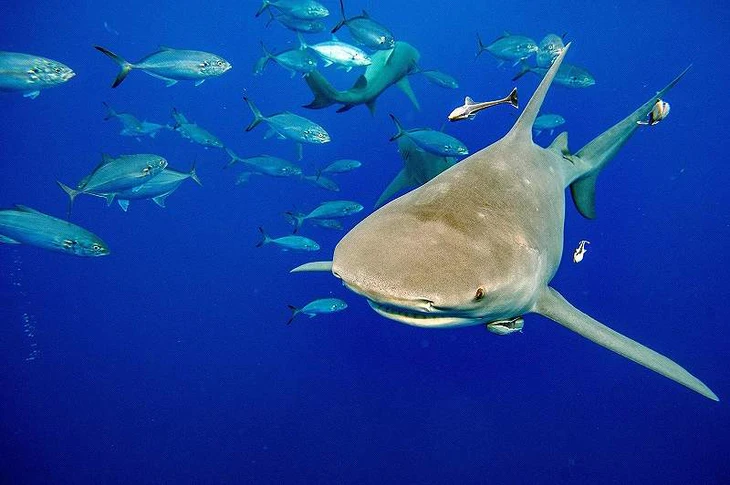
A lemon shark off the coast of Jupiter, Florida, USA - Photo: AFP-Jiji
The study, conducted by Professor Éric Parmentierd from the University of Liège (ULiège, Belgium) and international colleagues from New Zealand and the US, has opened up new perspectives on the potential communication behaviour of sharks.
According to a publication in the scientific journal "Royal Society Open Science", researchers have recorded the ability to emit "clicking" sounds in the starry shark (Scyliorhinus stellaris) when they feel disturbed.
This serendipitous discovery came from an early experiment focused on shark hearing. According to Professor Parmentier, while performing aquarium manipulations with a particular species of shark, the team was surprised to notice that when they were caught, they began to emit strange sounds.
Remarkably, after a few seconds of vocalization, they returned to a calm state . This is the first time this unique phenomenon has been recorded in the scientific community.
Scientists suspect that the source of these sounds lies in the unique structure of the starfish's teeth. Unlike the sharp teeth commonly found in most sharks, the teeth of this species are flat and stacked, similar to those of a stingray.
According to analysis by the University of Liège, this structure can produce a hissing sound due to the friction between the two jaws, thereby forming the characteristic "clicking" sounds.
While the researchers caution that this is unlikely to be a complex form of communication, they believe that these sounds may serve as a defense response. They could be a distress signal when threatened or a way to startle an opponent, giving prey an opportunity to escape.
Making sounds or changing color are common tactics animals use to surprise and distract predators, the team hypothesizes. Sometimes, just a moment of distraction from the predator is enough for the prey to escape. Some fish species also exhibit similar behaviors.
This discovery adds an interesting piece to the diverse picture of how marine life communicates.
Scientists have long known about the singing ability of whales, the location-based clicking of dolphins, and many other forms of vocal communication of marine mammals. However, the discovery of a similar ability in a shark species has opened up a promising new research direction.
In the future, Professor Parmentier and his team hope to conduct further studies to determine the exact biological significance of these “clicks.” One of the key goals is to verify whether this behavior occurs in the sharks’ natural habitat.
Source: https://tuoitre.vn/ca-map-keu-cuu-bang-am-thanh-la-20250419150505279.htm



![[Photo] Prime Minister Pham Minh Chinh and Prime Minister of the Kingdom of Thailand Paetongtarn Shinawatra attend the Vietnam-Thailand Business Forum 2025](https://vphoto.vietnam.vn/thumb/1200x675/vietnam/resource/IMAGE/2025/5/16/1cdfce54d25c48a68ae6fb9204f2171a)









![[Video] Tran Dai Nghia Award 2025 honors 2 outstanding scientific and technological works](https://vphoto.vietnam.vn/thumb/402x226/vietnam/resource/IMAGE/2025/5/16/4ddf8bb7d7db4931a613bd16be060c96)












![[Photo] President Luong Cuong receives Prime Minister of the Kingdom of Thailand Paetongtarn Shinawatra](https://vphoto.vietnam.vn/thumb/1200x675/vietnam/resource/IMAGE/2025/5/16/52c73b27198a4e12bd6a903d1c218846)































































Comment (0)